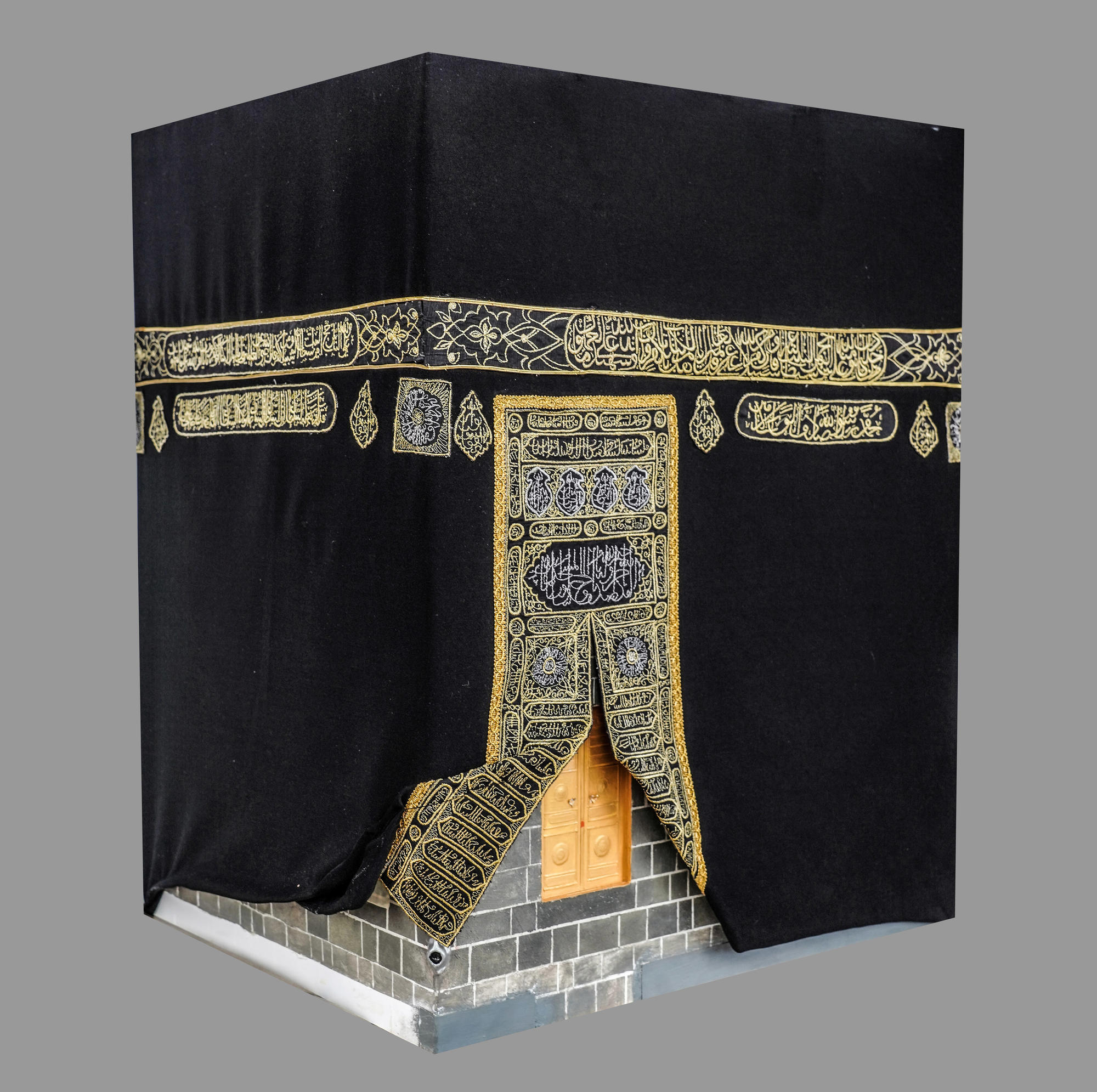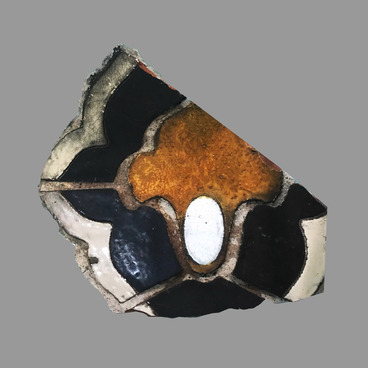Kaaba is a structure resembling a cube with the sides of 10 and 12 metres and the height of 15 metres situated in the inner courtyard of the Grand Mosque of Mecca — the Sacred Mosque (Al-Masjid al-Haram).
Allegedly, Adam created the first Kaaba at the behest of the Lord. In Koran, he says: ‘God has appointed the Kaaba, the Sacred House, a sanctuary for the people, and the Sacred Month, and the offerings, and the garlanded. That you may know that God knows everything in the heavens and the earth and that God is Cognizant of all things’ (5:97). Adam was given white stone from Paradise, but later it turned black because of the sins of people touching it and acquired the name al-Ḥajaru al-Aswad (‘the Black Stone’). Today it is encased I a silver frame and placed to the left of Kaaba’s doors in its Eastern corner. Mohammed himself installed the Black Stone into the wall of Kaaba.
The Great Flood destroyed the shrine, but several ages after the calamity, prophet Ibrahim (known to the Christians as Abraham and worshiped by three religions: Islam, Judaism and Christianity) and his son Ismail restored it. Allah showed them the place where Kaaba used to be, and they finished the construction with the help of the Lord. The shrine and the surroundings went through reconstruction several times during the period of its existence.
In ancient times, the structure was worshiped as a pagan shrine of Quraysh tribe, to which Mohammed belonged. The nomads of the Arab Peninsula gathered here in front of the idols twice a year to perform their religious rites. After Islam emerged, Kaaba was believed to be the main Moslem sanctuary. It received a symbolic name of al-Bayt al-Haram (“the Sacred House”).
For Moslems all over the world it is the reference point when performing namaz (the prayer). In the second year of hegira, Mohammed changed the kiblah (the direction of the prayer) to Kaaba, and since then every praying Moslem directs his eyes to it.
Annually, in the month of Zulhijjah, two months after the end of Ramadan, the believers head for Mecca to perform he fifth Pillar of Islam — the pilgrimage (Hajj), during which they have to walk around the Sacred House seven times. The pilgrims do not walk inside; it is open only for the most honourable guests. Moslems can also visit Mecca and Kaaba during minor pilgrimage (umrah), which is allowed any time of the year.
Allegedly, Adam created the first Kaaba at the behest of the Lord. In Koran, he says: ‘God has appointed the Kaaba, the Sacred House, a sanctuary for the people, and the Sacred Month, and the offerings, and the garlanded. That you may know that God knows everything in the heavens and the earth and that God is Cognizant of all things’ (5:97). Adam was given white stone from Paradise, but later it turned black because of the sins of people touching it and acquired the name al-Ḥajaru al-Aswad (‘the Black Stone’). Today it is encased I a silver frame and placed to the left of Kaaba’s doors in its Eastern corner. Mohammed himself installed the Black Stone into the wall of Kaaba.
The Great Flood destroyed the shrine, but several ages after the calamity, prophet Ibrahim (known to the Christians as Abraham and worshiped by three religions: Islam, Judaism and Christianity) and his son Ismail restored it. Allah showed them the place where Kaaba used to be, and they finished the construction with the help of the Lord. The shrine and the surroundings went through reconstruction several times during the period of its existence.
In ancient times, the structure was worshiped as a pagan shrine of Quraysh tribe, to which Mohammed belonged. The nomads of the Arab Peninsula gathered here in front of the idols twice a year to perform their religious rites. After Islam emerged, Kaaba was believed to be the main Moslem sanctuary. It received a symbolic name of al-Bayt al-Haram (“the Sacred House”).
For Moslems all over the world it is the reference point when performing namaz (the prayer). In the second year of hegira, Mohammed changed the kiblah (the direction of the prayer) to Kaaba, and since then every praying Moslem directs his eyes to it.
Annually, in the month of Zulhijjah, two months after the end of Ramadan, the believers head for Mecca to perform he fifth Pillar of Islam — the pilgrimage (Hajj), during which they have to walk around the Sacred House seven times. The pilgrims do not walk inside; it is open only for the most honourable guests. Moslems can also visit Mecca and Kaaba during minor pilgrimage (umrah), which is allowed any time of the year.



